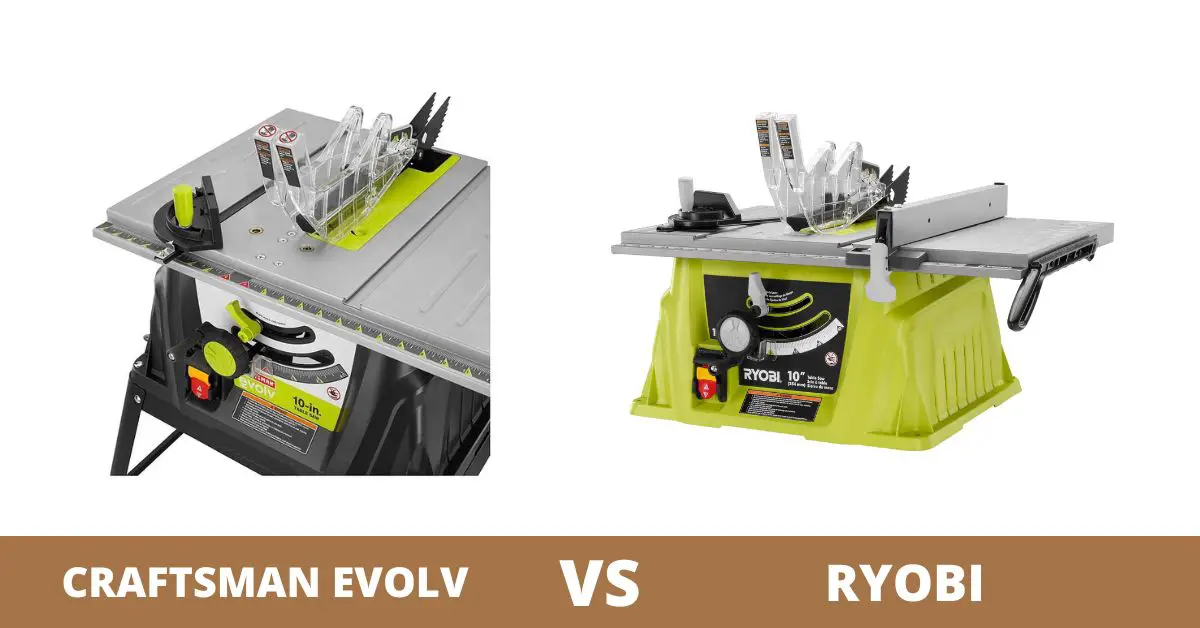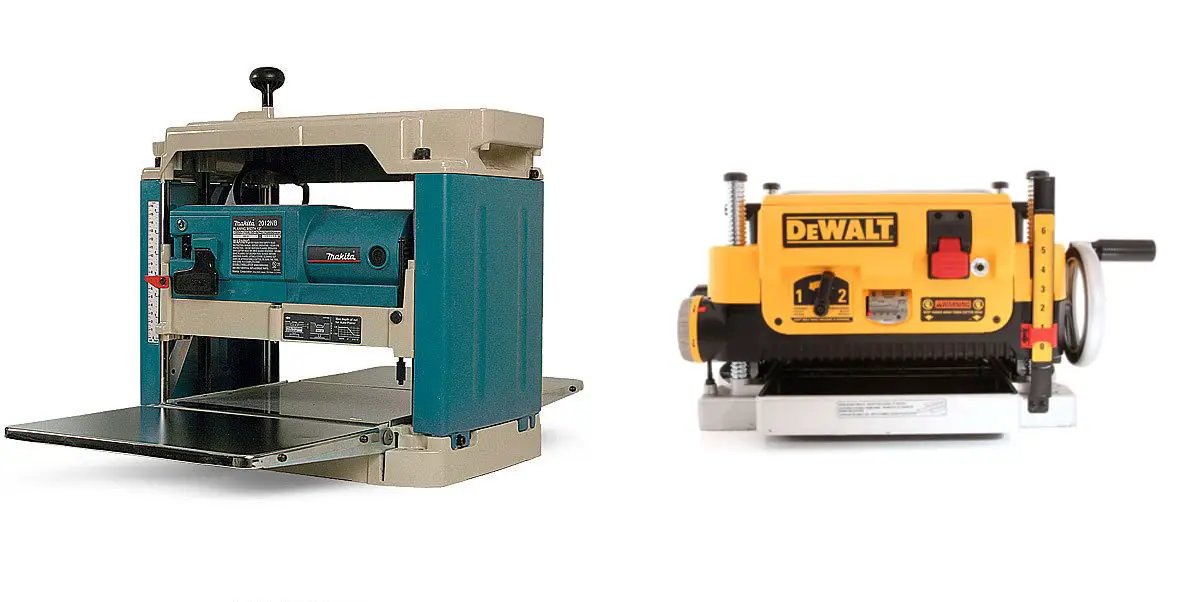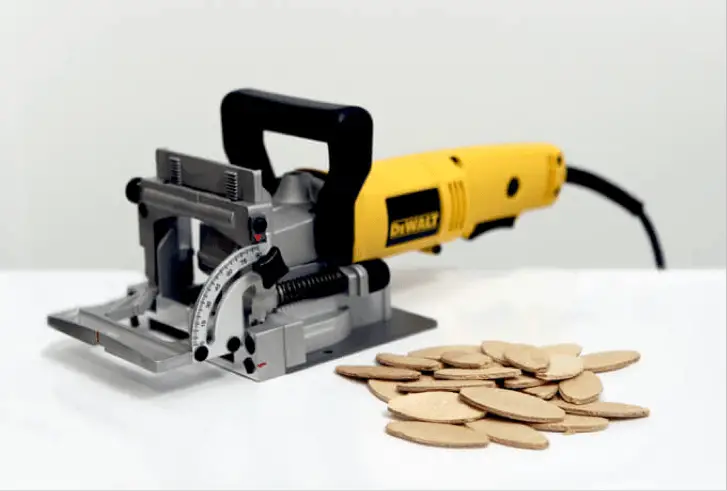Power Tools
Craftsman vs Ryobi Table Saw
Table saws are woodshop essentials. Even though you can still cut and shape wood using less powerful tools, the scale of your projects is greatly limited without a table saw. That’s why buying a cheap Ryobi, or a used Craftsman table saw is better than not having one at all.
If you’ve already connected these dots, the question on your mind is whether you should get a Craftsman or a Ryobi. Admittedly, it’s not an easy decision to make. These are B-tier brands that are known for affordability but not necessarily quality.
Take a look at this Craftsman vs. Ryobi table saw comparison to see which offers more bang for your buck.
Craftsman vs. Ryobi: Origins
Both Craftsman and Ryobi have been around for decades. Craftsman was founded in 1927 (93 years ago), whereas Ryobi was established in 1943 (78 years ago). Both companies have a healthy reputation in the automobile, construction, and building equipment industries.
Craftsman is an American company that specializes in hand tools, power tools, lawn and garden care equipment, and work attire. Ryobi, on the other hand, is a Japanese company that manufactures electric components and sells printing equipment, power tools, and building hardware.
Both brands are widely available on Amazon, Home Depot, and other online shops. You can also find used tools, replacement parts, and custom accessories on sites like eBay and Craigslist.
Best-selling Craftsman table saw.
Craftsman has created a variety of table saws over the past nine decades. One of their most iconic product is the Craftsman 113xx series. The table saw has stood the test of time and is still highly recommended for beginners in need of durable yet affordable equipment.
Craftsman 28461 Evolv Table Saw
The latest table saw from this company is the Craftsman Evolv, featuring a 15-amp motor, a 24T 10” carbide blade, a safety key system, and a detailed user manual.
It’s a decent entry-level table saw that can make versatile cuts, albeit not with a high degree of precision. The blade can cut 2.5” at 45° and 3” at 90°, adequate cut capacities for less specialized work such as trimming plywood sheets.
The Craftsman Evolv comes with a miter gauge, push stick, and rip fence. These get the job done, but as mentioned, their degree of precision is mediocre at best. The wheeled stand is a nice touch because it makes the tool more portable.
For the bare tool, you’ll only spend about $200. Accessories and extra safety features will cost you a bit more.
Best-selling Ryobi table saw.
Ryobi’s latest table saw features a folding X-stand for improved storage and portability. It has a 15-amp motor that produces up to 5,000 RPM (no load) and has enough rip capacity for 2×4 lumber. Its rip capacity is 12” to the right and 8” to the left of the blade. It uses a standard 10” blade, which is sufficient for basic applications.
The X-stand is built compactly to fit smaller spaces. It also has wheels that make it easier to move around the 50-pound piece of equipment and store it out of the way when it’s not in use. The stand has storage space for the push stick and other accessories. It’s a nice feature for making adjustments on the fly.
Why choose a Craftsman table saw?
Other than being a world-renowned brand with decades in the industry, Craftsman is also an excellent manufacturer of power tools. Their table saws are known for remarkable stability and resilience.
It’s no surprise that one of their older models, the 113xx series, is still available today and revered as a cast-iron monster of a table saw. It lacks many modern features and looks a bit dated, but it is a workhorse built from cast iron. Beginner woodworkers may find value in buying a used Craftsman 113xx table saw and installing the necessary safety features.
Craftsman table saws are sturdy and durable, even when bought used. When fully decked out with improved rip fences, miter gauges, riving knives, and other safety features, a used Craftsman table saw worth around $200 can perform as well as a $900 table saw.
Why choose a Ryobi table saw?
Ryobi table saws are commonly built using plastic, and that’s a sore point for some users. On the plus side, that makes them lightweight and extra portable, but it significantly reduces their durability.
Still, the manufacturer packs a decent amount of features into these table saws. They come with every bell and whistle you might want, something that cannot be said about the older Craftsman.
Most importantly, Ryobi table saws, even those considered high-end, are very reasonably priced. Chances are that you can get a wider range of features with any entry-level Ryobi than you would with brands like Bosch, but the compromise is build quality.
Advice for buying a used table saw
As a beginner, it’s okay to spend less on equipment while you’re still in the pre-commitment phase. Spending between $150 - $350 is perfectly reasonable, especially if you’re buying used.
Buying used tools is a good way to save money and get reliable tools provided you remember to do the following:
Inspect the internals thoroughly before you buy the tool. Look for signs of rust, frayed wires, and components that are beyond repair. Don’t ignore any signs of abuse, as they usually mean the tool could die on you at any time.
Be picky. Assess all your options. Weigh them against each other. Up until you hand over your hard-earned money, you have every right to change your mind if you don’t like what’s on offer.
Lifetime warranties exist, and you’re much better off with a tool that’s still under warranty.
Driving to collect the tool is usually cheaper than paying for shipping. Consider making a trip of it if you want to shave even more money off the purchase.
Demand complete honesty. Get the full history of the tool’s use. Was the previous owner a hobbyist or a professional woodworker? Did they replace any components? Did they make any upgrades? It’s important to ask these questions when learning about the tool’s current state.
Why You Should Trust Us
At Woodworking Tool Guide, we know one size doesn't fit all! We cater to every woodworker, from beginner to pro, with insights and recommendations tailored to your skill level, project needs, and budget. We take the guesswork out of choosing the right tools, whether you're tackling your first crafting a masterpiece for the ages. So grab your chisel, join our community, and let's build something amazing together!
Woodworking Tool Guide wasn't just born, it sprouted from a seed of passion for the craft. What started as a joyful exploration blossomed into a trusted online haven for fellow enthusiasts like you. We pour our love into meticulously chosen review selections, meticulous hands-on testing, and lab-backed insights, all to empower you with reliable, comprehensive information you can build on. So, grab your tools, trust our guidance, and let's build something beautiful together!
Passion-Driven Expertise
Our journey started with a shared love for woodworking. The team behind the Woodworking Tool Guide is comprised of individuals who are not just writers but passionate woodworkers themselves. This shared enthusiasm ensures that our content is crafted with a deep understanding of the craft and an authentic appreciation for quality tools.
Top Tool Guides Online
Woodworking Tool Guide has rapidly ascended to become one of the premier online destinations for tool guidance. Our commitment to excellence and the accuracy of our information has positioned us as a reliable source for both beginners and seasoned woodworkers seeking trustworthy advice on the best tools for their projects.
User-Centric Approach
Our content caters to every woodworker, from rookies just starting out to seasoned pros tackling intricate projects. We tailor our insights and recommendations to your skill level, project needs, and budget, ensuring you find the perfect tools to match your unique woodworking journey. So step into your workshop, grab your tool belt, and let Woodworking Tool Guide be your trusted companion as you craft your masterpieces.
Continuous Support and Innovation
Woodworking is an ever-evolving craft, and so is our commitment to supporting you. We are dedicated to bringing you the latest information on woodworking tools, techniques, and trends. Our team is actively working to expand our content and bring you more valuable insights, ensuring that you stay well-informed in your woodworking adventure.
Hands-On Experience
Ditch the endless research rabbit hole! At Woodworking Tool Guide, we believe in actionable advice, not armchair analysis. We get our hands dirty, putting every tool through its paces in real-world woodworking scenarios. Whether it's the precision of a table saw, the versatility of a router, or the tactile satisfaction of a handplane, we test for performance, durability, and user-friendliness. No more sifting through dry specs – we deliver practical insights you can trust to transform your woodworking dreams into reality.
Woodworking Tool Guide isn't just a review site, it's your trusted companion on the sawdust-filled path to woodworking mastery. Our expert team, led by veteran David Jones, meticulously tests and explains tools in terms you understand. We cut through the jargon, bias, and confusion with real-world insights and honest evaluations. Join our passionate community, where decades of experience, cutting-edge knowledge, and shared love for the craft come together to guide you every step of the way. So grab your chisel, buckle up, and let's embark on this exciting woodworking adventure, together!





